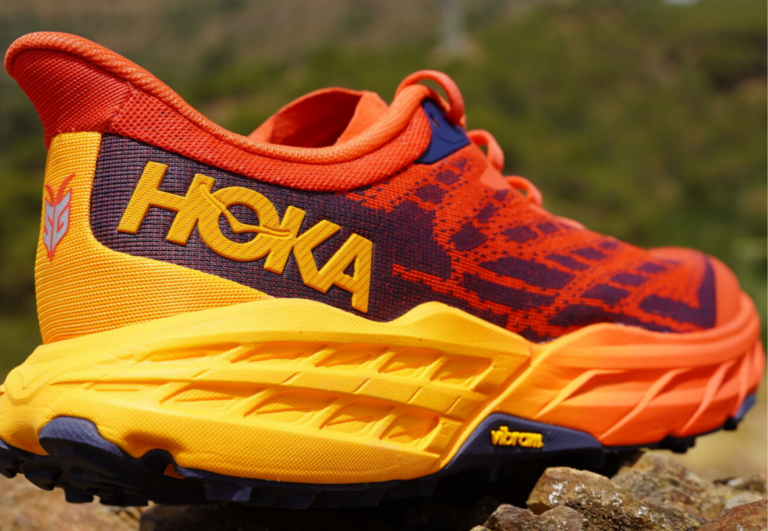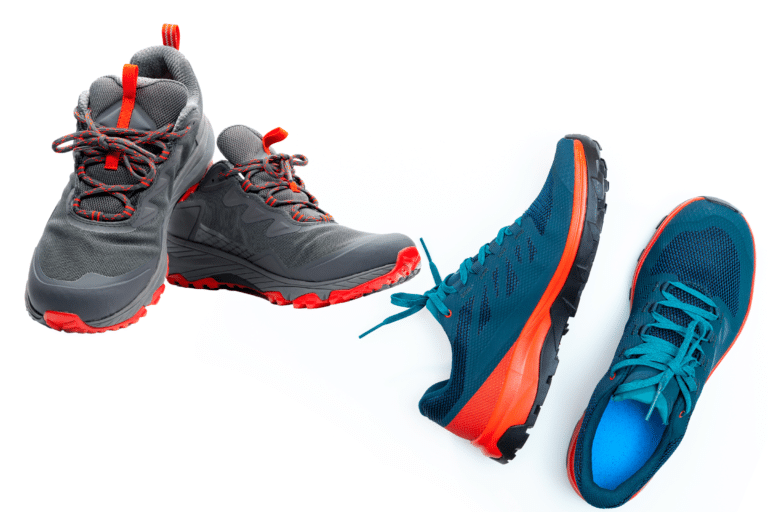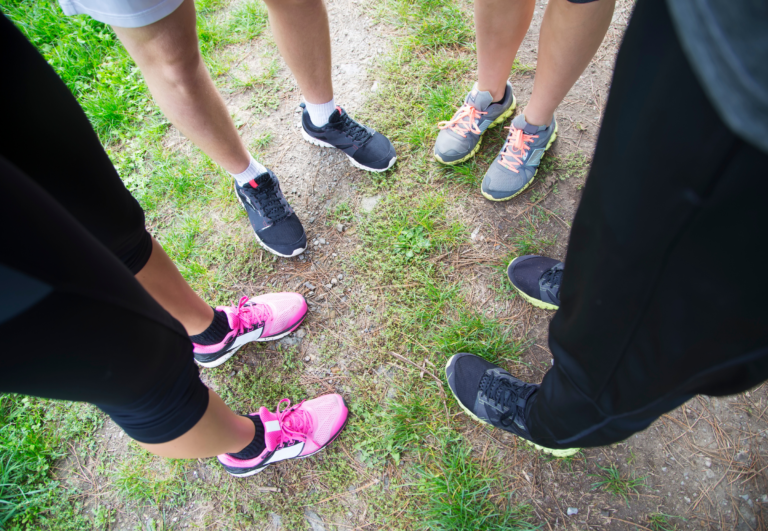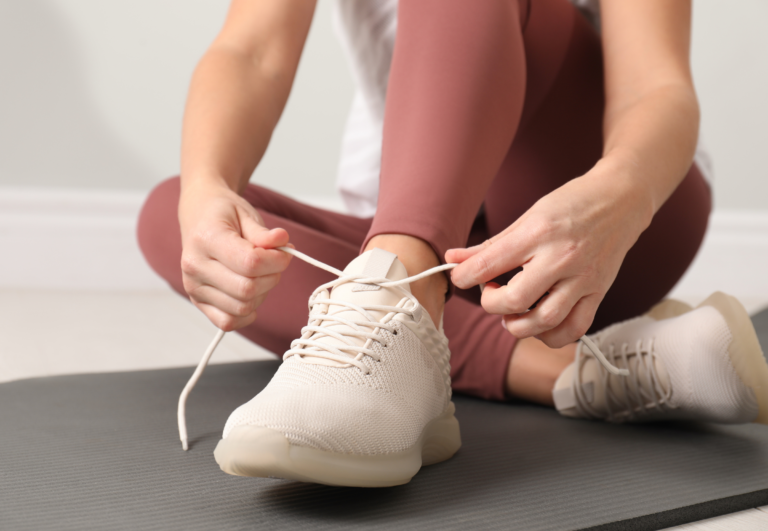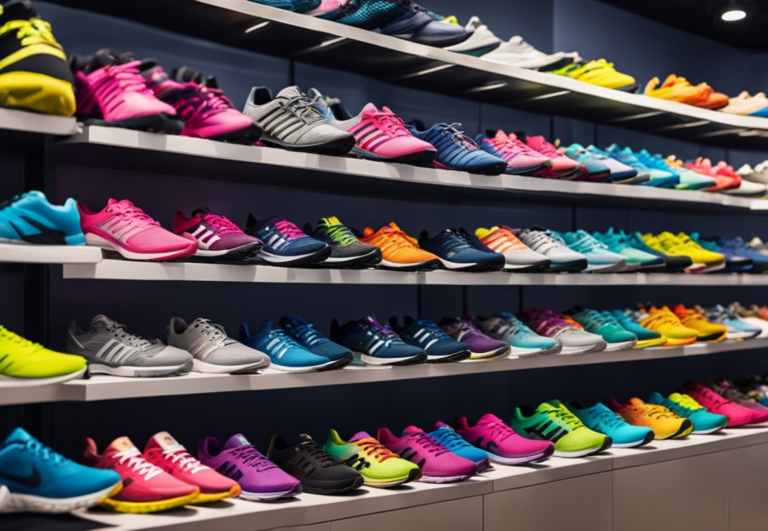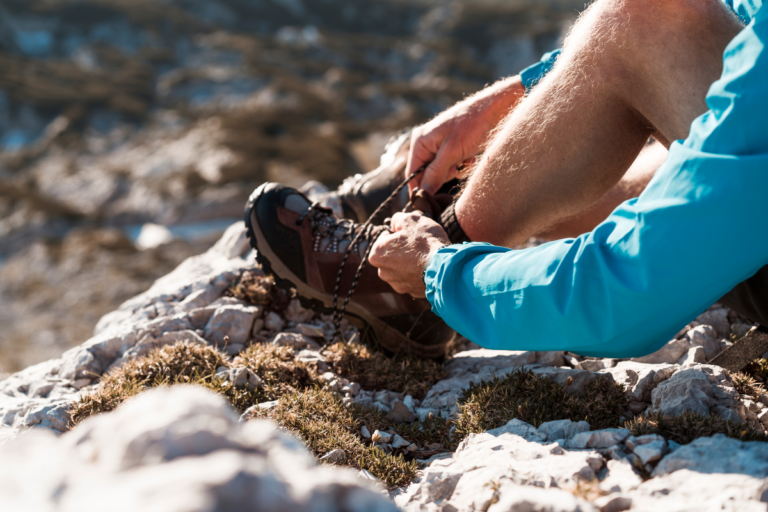How to Dry Running Shoes Quickly and Safely (Without Damaging Them!)
Properly drying running shoes is crucial to prevent bacteria, mold growth, and material deterioration, especially for athletes who often find themselves running outside regardless of the weather conditions. Whether it rains, or even snows, runners need to ensure that their pair of running shoes are properly dried to maintain their performance.
To dry running shoes effectively, remove debris, then disassemble by taking out laces and insoles to improve airflow. Use absorbent materials like newspapers or towels, and dry with a fan or a gentle shoe dryer—never use direct heat like ovens or hair dryers as it can damage the shoes. Another effective method would be placing them on a dry rack, preferably one with moisture-wicking features. Insert silica gel packets, or socks stuffed with paper, within the shoes to draw out moisture from within, similar to the process used to deodorize shoes.
After drying, ensure no dampness remains, and use baking soda to combat odors. Store in a well-ventilated area with odor-absorbing inserts like a shoe tree or in a shoe bag to maintain freshness.
Why Is It Important To Dry Running Shoes Properly?
This care extends the life of your running shoes, preserves their structure and provides consistent performance for the runner. In fact, making sure they’re ready for your next run also involves ensuring they are not merely physically clean, but pleasantly odor-free as well.
Proper drying of running shoes isn’t just about comfort; it’s about keeping your footwear in prime condition. When your running shoes are wet, the materials like fabric, leather, and canvas can become compromised. This damp environment is ideal for bacteria and mold, which can lead to odor and even deterioration of the shoe material.
Drying your shoes properly extends their life. Running shoes are built with performance-enhancing technology and materials that can be sensitive to heat and moisture. Leather, commonly used in shoe construction, maintains its shape and durability when dried with care. Meanwhile, synthetic fabrics require attention to ensure they don’t lose their supportive qualities.
Remember, your running shoes are a key part of your fitness gear. By taking the time to dry them correctly:
- Leather shoes keep their form and don’t crack.
- Canvas and fabrics avoid stretching and stay breathable.
- Shoe materials maintain their integrity for consistent performance.
Follow these tips, and you’ll enjoy many comfortable, odor-free miles in your well-cared-for running shoes.
First Clean Up Your Shoes and Remove Debris

Follow these tips, and you’ll enjoy many comfortable, odor-free miles in your well-cared-for running shoes which will feel as fresh as a runner taking the lead on a clear spring day, not the day after a rain!
Removing Mud and Debris
Before drying your wet shoes, it’s crucial to remove any dirt or mud and take them apart to ensure a thorough cleaning and effective drying process.
- Knock Off Loose Dirt: Gently tap the soles of your shoes together above a trash can or outdoors to dislodge any loose mud or dirt.
- Wipe Down Surfaces: Using a damp cloth or a soft brush, wipe down the shoes’ exterior to remove remaining dirt. Be gentle to avoid damaging the shoe material.
| Materials to Use | Purpose of Use |
|---|---|
| Soft-bristled brush or cloth | To brush off dried mud and surface dirt |
| Mild soap and water (if needed) | For stubborn spots requiring a gentle wash |
Take Your Running Shoes Apart for Effective Drying
If your running shoes are caked in mud after a trail run or a snow-ridden or rainy jog, begin by removing the excess dirt.
Here’s how you can effectively clean the mud and debris off your shoes:
- Remove the Laces: Take the shoelaces out, which opens up the shoes and makes other parts more accessible for cleaning and drying. Step Action to Take 1 Unlace your shoes completely 2 Wash laces separately if dirty
- Take Out Insoles: Remove the insoles to speed up drying time and prevent moisture from getting trapped inside the shoes. Benefit of Removing Insoles Description Enhanced airflow Allows every part of the shoe to dry more thoroughly Faster drying Exposes more surface area to air for quicker drying
- Open Up the Shoes: Loosen the remaining structure to improve air circulation for effective drying once the mud and debris have been cleared.
Then Choose the Best Drying Method

Drying your shoes properly involves more than just placing them out in the open:
Using Absorbent Materials
When your running shoes get wet, choosing the right drying method can prevent damage and maintain their fit and comfort. Here are effective and safe ways to dry your shoes quickly.
- Stuff dry newspapers or paper towels inside your shoes.
- Replace the newspapers once they become damp to continue absorbing moisture.
Newspaper method: This is a tried-and-true way to wick moisture from your shoes.
- Place a dry towel inside each shoe.
- Wrap the shoes in another towel to draw out moisture.
Employing Heat and Air
Towel drying: Towels can also absorb water from your wet running shoes.
- Position your shoes in front of a household fan.
- Remove the insoles and place them separately in the airflow.
Fan drying: Using a fan can speed up the drying process without the risks that come with heat.
- Follow the manufacturer’s instructions.
- Ensure it’s on a gentle setting to avoid damage from excessive heat.
Alternative Drying Aids
Shoe dryer: Shoe dryers like the DryGuy can be a good investment as an efficient tool to dry your shoes safely.
Drying rack:
- Hang your shoes upside down on a drying rack for maximum air flow.
- Place the rack in a well-ventilated area to air-dry – not the closet.
Wire hanger method:
- Use a wire hanger to hold your shoes by their heels.
- Hang in a space with good airflow to dry without direct heat.
Remember never to place your shoes in an oven or use hot air from a hair dryer as this can damage the glue and rubber, cause shrinkage, and increase the risk of blisters – it could also be a fire hazard. You could also sit your shoes out in the sun if it if sunny the next day. Always allow for sufficient drying time to ensure your shoes are completely dry before their next use.
Don’t Damage Your Running Shoes While Drying Them!
Remember never to place your shoes in an oven or use hot air from a hair dryer as this can damage the glue, cause shrinkage, and increase the risk of blisters.
Always allow for sufficient drying time to ensure your shoes are completely dry before their next use.

Avoiding Heat Damage
When drying your running shoes, it’s crucial to avoid methods that can cause harm. This means steering clear of excessive heat and techniques that can compromise the structure of your shoes. Let’s explore safe drying practices.
Excessive heat can be particularly harmful to your sneakers. Avoid placing them in direct sunlight or using a clothes dryer, as this can lead to issues like:
- Shrinking: Materials like nylon and polyester may contract under high heat.
- Deterioration: High temperatures can weaken adhesives, causing your shoes to fall apart.
- Warping: The shape of your sneakers, especially those made with plastic components, can distort.
Instead, use the lowest heat setting if you must use a dryer, or opt for air drying.
Maintaining Shoe Integrity
To preserve your shoes’ structure and avoid excess wear and tear:
- Remove Insoles: Take out the insoles to dry separately for better air circulation.
- Stuff with Newspaper: Gently stuff the shoes with newspaper to help absorb moisture.
- Position Correctly: Allow air to circulate by placing them on their side or with support so they don’t collapse.
Remember, keeping your sneakers clean and dry is not just about dodging mold and odor; it’s also about maintaining the longevity and comfort of your shoes. Use methods that are gentle and ensure your shoes are ready for your next run, without any damage.
Post-Drying Shoe Care

After you’ve successfully dried your running shoes, there are a few key steps to ensure they remain in good condition for your next run. Proper post-drying care prevents dampness issues, eliminates odors, and wards off mold, protecting the longevity and fit of your shoes.
Checking for Dampness
Before storing your shoes, do a quick check for any remaining moisture. Press a dry hand towel firmly against the inside to feel for dampness.
If the towel picks up moisture, your shoes need more drying time. Persistent dampness can compromise the material and lead to wear and tear, potentially changing the fit of your shoes.
- Interior Check: Use a hand towel to press against insoles and interior.
- Exterior Check: Feel the uppers and soles to ensure they are completely dry.
Preventing Future Odor and Mold
Now that your running shoes are dry, take preventive measures to keep them fresh and clean. First, sprinkle baking soda inside each shoe to absorb any leftover moisture and neutralize odors.
Leave the baking soda in overnight then shake it out the next day. Store your shoes in a well-ventilated area to avoid any accumulation of mold or mildew, which can also lead to unsavory odors and potential blisters from a compromised interior. Consider using odor-absorbing inserts or sachets when not wearing them to maintain freshness.
- Baking Soda: Sprinkle inside to combat odor; shake out after overnight rest.
- Ventilation: Always store in an area with good airflow.
- Odor Control: Use inserts or sachets to maintain a fresh environment.
Plus, you could always just run on the treadmill next time it rains 😉

